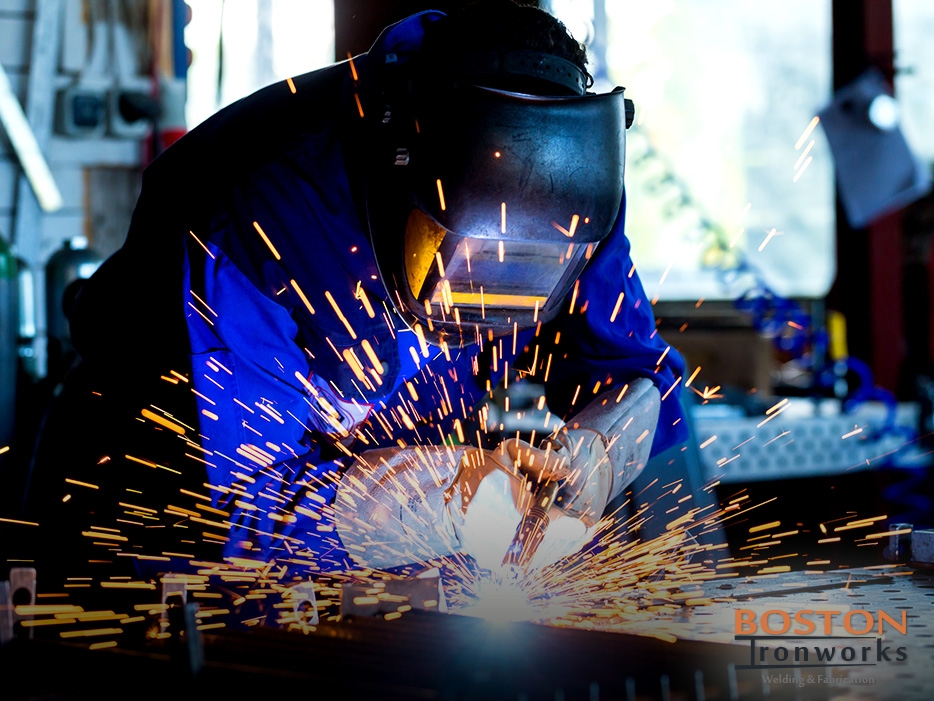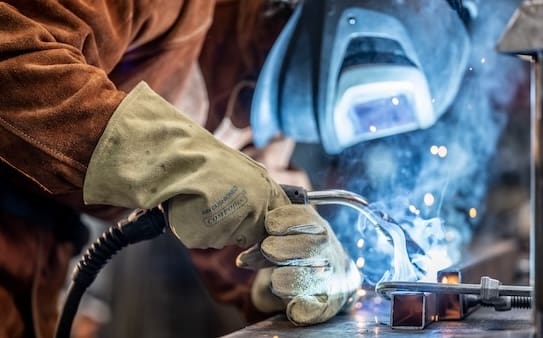Quick solutions to weld misalignment in Montana Mobile Welding and Repair Fabrication
Wiki Article
Common Welding Repair Service Issues and Just How to Address Them Efficiently
Welding repair work commonly run into a series of concerns that can threaten the honesty of the end product. Common problems consist of poor penetration, porosity, and misalignment, to name a few. Each problem offers special obstacles that need particular methods for resolution. Comprehending these problems is crucial for welders aiming to improve their skills and outcomes. This discussion will certainly explore these usual welding repair service concerns and reliable techniques to address them.Insufficient Infiltration
Insufficient penetration takes place when the weld steel falls short to completely fuse with the base material, causing weak joints and possible structural failures. This concern typically stems from insufficient warm input, inaccurate electrode angle, or inappropriate welding rate. Welders may experience poor penetration as a result of a mistake of the essential parameters for a details material density or type. Additionally, contamination on the base product's surface area can impede effective bonding, intensifying the trouble. To resolve inadequate penetration, welders ought to assure ideal settings on their devices and keep a tidy work surface area. Regular inspection of welds is recommended to determine any type of shortages early, enabling timely improvements and the avoidance of compromised architectural stability in welded assemblies.Porosity
Porosity is a typical issue in bonded joints that materializes as small gas bubbles caught within the weld metal. This flaw can compromise the stability of the weld, resulting in decreased strength and possible failure under tension. Montana Mobile Welding and Repair Belgrade. Porosity commonly occurs from contamination, wetness, or improper welding methods, which permit gases to leave into the molten weld pool. To address porosity, welders ought to guarantee appropriate surface prep work, preserve a tidy workplace, and make use of appropriate welding criteria. In addition, choosing the best filler material and protecting gas can reduce gas entrapment. Normal assessment and screening of welds can help recognize porosity early, ensuring prompt corrective actions are taken, therefore maintaining the high quality and integrity of the bonded frameworkImbalance
Misalignment in welding can arise from various aspects, including incorrect configuration and thermal growth. Understanding the origin is important for efficient resolution. A number of correction strategies are offered to realign elements and ensure architectural stability.Reasons of Misalignment
Welding imbalance often stems from a variety of underlying problems that can jeopardize architectural stability. One key reason is improper fit-up of elements before welding, which can cause voids and unequal surfaces. Variants in thermal expansion throughout the welding process can likewise lead to distortion, especially if the materials being signed up with have various coefficients of expansion. Additionally, poor securing and fixturing may fail to hold parts securely in place, causing activity throughout welding. Badly maintained devices, consisting of welding machines and tools, might present inconsistencies in the weld grain, more contributing to imbalance. Driver mistake, stemming from not enough training or experience, can likewise play a considerable duty in producing misaligned welds.
Adjustment Methods Readily Available
Dealing with imbalance effectively needs a mix of corrective techniques customized to the details problems at hand. One common approach is using components or jigs to hold components in the correct setting during welding, making sure constant placement. Additionally, preheating the products can aid decrease distortion and boost fit-up. For significant misalignment, mechanical realignment strategies, such as utilizing hydraulic jacks or clamps, can be utilized to fix the position before welding. Post-weld warmth therapy may also be required to eliminate stress and anxieties triggered by imbalance. Mindful evaluation and modification throughout the configuration phase can avoid imbalance issues from coming to be considerable issues, promoting a smoother welding procedure and boosting total architectural honesty.Distortion
Distortion is an usual obstacle in welding that can arise from various aspects, consisting of irregular heating and cooling. Understanding the reasons for distortion is crucial for executing efficient avoidance techniques. Resolving this problem not just boosts architectural stability however also enhances the overall high quality of the weld.Root causes of Distortion
When based on the extreme warm of welding, materials often undergo changes that can lead to distortion. This sensation mostly develops from thermal expansion and tightening during the welding process. As the weld location warms up, the product expands; upon cooling, it gets, which can create inner stress and anxieties. In enhancement, uneven heating across a workpiece can aggravate these stresses, resulting in warping or bending. The kind of material likewise plays a significant duty; steels with varying thermal conductivity and coefficients of expansion might react in different ways, causing unpredictable distortions. Poor joint design and inadequate fixturing can add to misalignment throughout welding, boosting the chance of distortion. Understanding these causes is necessary for effective welding repair service and avoidance techniques.Avoidance Techniques
Reliable avoidance strategies for distortion throughout welding concentrate on controlling warmth input and ensuring appropriate joint style. Maintaining a constant warm input assists to minimize thermal expansion and tightening, which can lead to distortion. Utilizing techniques such as preheating the workpiece can additionally minimize the temperature level gradient, advertising consistent heating. In addition, selecting ideal joint styles, such as T-joints or lap joints, can enhance security and reduce stress and anxiety concentrations. Carrying out correct fixturing to safeguard the workpieces in position even more aids in maintaining alignment during the welding process. Lastly, staggered welding sequences can disperse warm extra evenly, stopping localized distortion. By applying these techniques, welders can substantially reduce the possibility of distortion and enhance the total top quality of their welds.Splitting
Breaking is an usual concern experienced in welding repair work, typically resulting from numerous aspects such as improper cooling rates, product choice, or inadequate joint preparation. The event of splits can substantially endanger the honesty of the weld, resulting in prospective failures throughout procedure. To resolve this issue, welders must first evaluate the source, ensuring that products are compatible and suitably chosen for the details application. In addition, managing the cooling rate throughout the welding procedure is vital; fast air conditioning can cause anxiety and cause fracturing. Correct joint from this source design and preparation additionally contribute to reducing the risk. Carrying out these approaches can boost weld quality and sturdiness, eventually decreasing the probability of splitting in ended up weldments.
Incomplete Combination
A substantial problem in welding repair services is insufficient blend, which occurs when the weld metal does not sufficiently bond with the base material or previous weld passes - Fabrication. This flaw can lead to weak points in the joint, possibly compromising the integrity of the bonded structure. Elements adding to insufficient blend include not enough warm input, improper welding strategy, and contamination of the surfaces being signed up with. To address this concern effectively, see here welders ought to assure correct pre-weld cleansing and surface preparation, along with adjust their welding parameters to attain sufficient infiltration and combination. Normal assessment during the welding process can likewise aid identify insufficient blend early, enabling prompt restorative measures to improve the total high quality of the weldOverheating
While welding fixings can enhance architectural stability, overheating offers a considerable challenge that can cause material destruction. Too much warmth during welding can alter the mechanical buildings of metals, causing decreased stamina, boosted brittleness, and bending. This sensation is particularly vital in high-stress applications where architectural integrity is paramount. Identifying getting too hot can involve visual inspections for discoloration or distortion, in addition to keeping an eye on temperature throughout the welding procedure. To minimize the threats connected with getting too hot, welders ought to utilize ideal techniques, such as managing warm input, changing traveling speed, and utilizing suitable filler materials. Additionally, implementing pre- and post-weld heat therapies can assist restore product residential properties and improve the general high quality of the repair work, making sure lasting performance and safety and security.Frequently Asked Questions
What Are the Common Signs of a Welding Problem?

Just How Can I Test My Welds for High quality?
To examine welds for top quality, one can use aesthetic examinations, ultrasonic screening, and radiographic methods. Each method guarantees structural integrity, identifies flaws, and validates adherence to defined criteria, eventually enhancing the reliability of the welded joints.What Security Safety Measures Should I Take While Welding?
When welding, one need to prioritize security by using proper personal protective equipment, guaranteeing appropriate ventilation, securing flammable products away, preserving a clean workspace, and understanding environments to prevent injuries and mishaps.Can I Repair a Weld Without Renovating the Entire Joint?
Fixing a weld without redesigning the whole joint is feasible, depending mig welding stainless steel upon the damage (Montana Mobile Welding and Repair). Methods such as grinding, including filler material, or using a welding procedure can efficiently deal with particular problems while protecting the surrounding structureWhat Tools Are Essential for Efficient Welding Repairs?
Important tools for effective welding fixings include a welding device, cord brush, mill, protective equipment, clamps, and filler materials. Each tool plays a crucial role in ensuring high quality and safety during the fixing process. Porosity usually arises from contamination, wetness, or inappropriate welding methods, which allow gases to leave right into the molten weld pool. Improperly conserved tools, including welding devices and devices, might present variances in the weld bead, more contributing to imbalance. When subjected to the extreme warm of welding, products typically undertake modifications that can lead to distortion. Fracturing is a common issue run into in welding fixings, frequently resulting from numerous factors such as incorrect air conditioning rates, product choice, or inadequate joint preparation. A significant concern in welding repairs is incomplete combination, which takes place when the weld metal does not adequately bond with the base material or previous weld passes.Report this wiki page